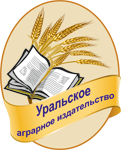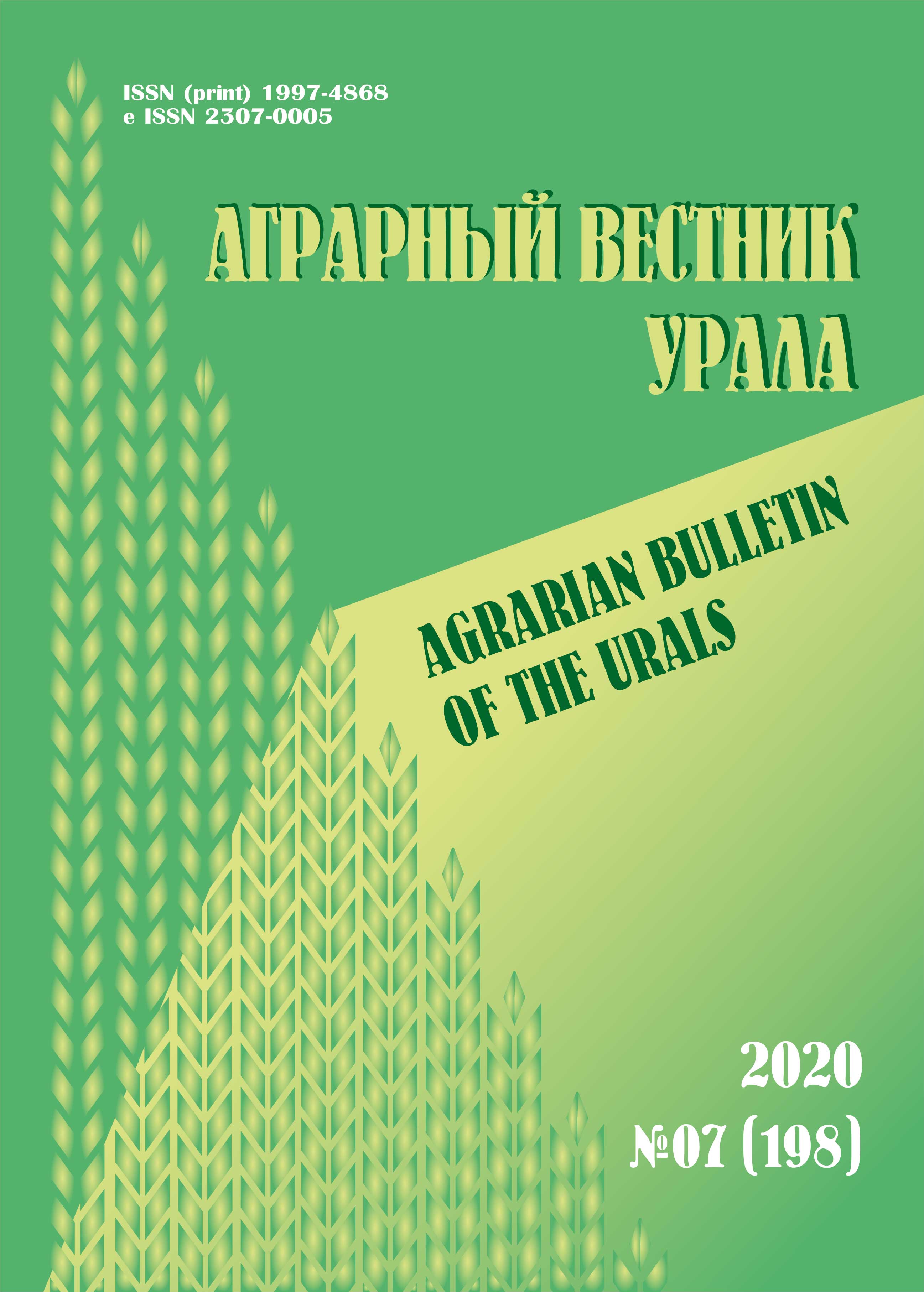Russian Federation
Abstract. Currently, much attention is paid to the monitoring of new biopathogens, which are formed as a result of targeted genetic manipulations resulting from human activity, and natural variability. The sensitivity of mutated organisms to various disinfectants can differ significantly from the sensitivity of the original varieties. Thus, the assessment of alimentary-caused biological risk factors in terms of resistance to the effects of chemical disinfectants is an important area of scientific research. The aim of the work is to assess the nutritionally determined biological risk factors in terms of resistance to the effects of chemical disinfectants. The research methods were general scientific methods of cognition, as well as the analysis of alimentary-caused biological risk factors in terms of resistance to chemical disinfectants, which was carried out by us, based on the standardized methodology for the epidemiological assessment of Dubyansky-Maletskaya. The analysis covered a three-year period from 2019 to 2021, and was carried out by us on the materials of the Ryazan region provided by the Center for Hygiene and Epidemiology of the Ryazan Region and the Main Directorate of Veterinary Medicine of the Ryazan Region. The scientific novelty of the study lies in identifying the features of the manifestation of the sensitivity of alimentary-conditioned biological risk factors to various groups of chemical disinfectants. Results. Our study allowed us to draw the following conclusions: the resistance of alimentary-caused biological risk factors to chemical disinfectants is largely due to their etiological characteristics; among the group of pathogens with very low resistance to chemical disinfectants, the main share is occupied by risk factors of bacterial etiology; among the group of pathogens with medium resistance to chemical disinfectants, the main share is occupied by risk factors of viral etiology; among the group of pathogens with high resistance to chemical disinfectants, the main share is occupied by risk factors of helminthic etiology; a group of pathogens with a very high resistance to chemical disinfectants mainly consists of risk factors of helminthic etiology and spore-forming anaerobic bacteria.
biopathogens; anthroponoses; zooanthroponoses; food quality and safety; chemical disinfection
1. Guseva T. M., Evdokimova O. V., Kanina I. V. Mikroorganizmy - biologicheskie indikatory bezopasnosti ob”ektov vneshney sredy 127 [Microorganisms - biological indicators of the safety of environmental objects] // Scientiific life. 2017. No. 11. Pp. 120-127. (In Russian.)
2. Dubyanskiy V. M., Maletskaya O. V. Metodika otsenki biologicheskoy opasnosti vnutrennikh i vneshnikh ugroz v sub”ekte Rossiyskoy Federatsii [Methods for assessing the biological hazard of internal and external threats in the subject of the Russian Federation] // Problems of Particularly Dangerous Infections. 2021. No. 1 (111). Pp. 39-42. (In Russian.)
3. Evdokimova O. V., Konopleva V. I., Guseva T. M. Rasprostranenie vnebol’nichnykh oksatsillinorezistentnykh Staphylococcus aureus sredi zdorovykh lits [Spread of community-acquired oxacillin-resistant Staphylococcus aureus among healthy individuals] // Clinical Microbiology and Antimicrobial Chemotherapy. 2018. Vol. 20. No. S1. P. 20. (In Russian.) EDN: https://elibrary.ru/XZOQEP
4. Lyashchuk Yu. O., Teterin V. S., Ovchinnikov A. Yu., Panferov N. S. Kolichestvennaya otsenka urovnya biologicheskogo riska dlya alimentarno-obuslovlennykh infektsiy i invaziy v Ryazanskoy oblasti [Quantitative assessment of the level of biological risk for alimentary-caused infections and invasions in the Ryazan region] // Agrarian science. 2022. No. 6. Pp. 27-32. DOI:https://doi.org/10.32634/0869-8155-2022-360-6-27-32. (In Russian.) EDN: https://elibrary.ru/HNMZHB
5. Kostrova Yu. B., Martynushkin A. B. Problemy razvitiya rynka organicheskoy produktsii v RF [Problems of development of the market of organic products in the Russian Federation] // Vestnik Michurinskogo gosudarstvennogo agrarnogo universiteta. 2020. No. 1 (60). Pp. 252-255. (In Russian.) EDN: https://elibrary.ru/EVJNRY
6. Malov V. A., Maleev V. V., Pokrovskiy V. I. Botulinoterapiya i yatrogennyy botulizm: vzglyad infektsionista na problemu [Botulinum therapy and iatrogenic botulism: an infectious disease specialist’s view of the problem] // Infektsionnye bolezni. 2019. Vol. 17. No. 4. Pp. 55-61. DOI:https://doi.org/10.20953/1729-9225-2019-4-55-61. (In Russian.) EDN: https://elibrary.ru/QQZFZZ
7. Tyurina D. G., Laptev G. Yu., Novikova N. I. et al. Nauchnaya revolyutsiya v mikrobiologii i ee znachenie dlya praktiki [Scientific revolution in microbiology and its significance for practice] // Agricultural Science. 2020. No. 9. Pp. 37-42. DOI:https://doi.org/10.32634/0869-8155-2020-341-9-37-42. (In Russian.) EDN: https://elibrary.ru/PVYTGM
8. Evdokimova O. V., Biryukov V. V., Rybakov D. A., Kalinova Yu. A. Otsenka urovnya bioticheskogo i abioticheskogo zagryazneniya poverkhnostey s ispol’zovaniem printsipa absorbtsii sveta s tsel’yu sanitarno-mikrobiologicheskogo kontrolya [Evaluation of the level of biotic and abiotic contamination of surfaces using the principle of light absorption for the purpose of sanitary and microbiological control] // Epidemiology and vaccine prevention. - 2022. - T. 21. - № 2. - S. 66-73. - DOIhttps://doi.org/10.31631/2073-3046-2022-21-2-66-73. (In Russian.) EDN: https://elibrary.ru/BQQDER
9. Kostrova Yu. B., Lyashchuk Yu. O., Martynushkin A. B. Sovershenstvovanie protsedury kontrolya kachestva moloka kak faktor obespecheniya prodovol'stvennoy bezopasnosti [Improving the milk quality control procedure as a factor in ensuring food security] // Theoretical and applied problems of the agro-industrial complex. 2019. No. 1 (39). Pp. 45-49. DOI:https://doi.org/10.32935/2221-7312-2019-39-1-45-49 (In Russian.) EDN: https://elibrary.ru/DZQMVD
10. Lozovaya O. V., Martynushkin A. B., Stoyan M. V. Osobennosti ispol’zovaniya personal’nogo podkhoda pri upravlenii proizvodstvennym protsessom v agropromyshlennoy sfere [Features of using a personal approach in managing the production process in the agro-industrial sector] // Nauchnoe obozrenie: teoriya i praktika. 2021. Vol. 11. No. 8 (88). Pp. 2482-2491. DOI:https://doi.org/10.35679/2226-0226-2021-11-8-2482-2491. (In Russian.) EDN: https://elibrary.ru/FNYOFW
11. Linovitskaya A. A., Saytkhanov E. O., Kontsevaya S. Yu. Osobennosti epidemiologii rasprostraneniya gel'mintoznykh invaziy sredi vzroslykh i detey na territoriyakh Moskovskoy i Ryazanskoy oblastey // Herald of Ryazan State Agrotechnological University Named after P. A. Kostychev. 2019. No. 2 (42). Pp. 140-144. (In Russian.)
12. Nikulova L. V., Saytkhanov E. O., Britan M. N. Statisticheskaya otsenka ostrykh otravleniy u zhivotnykh 2018-2020 gody [Statistical assessment of acute poisoning in animals 2018-2020] // Perspektivnye tekhnologii v sovremennom APK Rossii: traditsii i innovatsii: materialy 72-y mezhdunarodnoy nauchno-prakticheskoy konferentsii, Ryazan', 20 aprelya 2021 goda. Ryazan, 2021. Pp. 121-125. (In Russian.)
13. Kheykho R. et al. Cross-relationships between schoolchildren's fruit and vegetable consumption and food choices with their mental well-being: a cross-sectional study // BMJ Nutrition, Prevention & Health. 2021. Vol. 4. No. 2. Pp. 447.
14. Lavalette S. et al. Cancer-specific and general indicators of nutrition and cancer risk: results of a prospective assessment of nutrition of the NutriNet-Santé group and cancer risk // Cancer Research. 2018. Vol. 78. No. 15. Pp. 4427-4435.
15. Arvidsson L. et al. Bidirectional associations between psychosocial well-being and dietary compliance in European children: Prospective results from the IDEFICS study // BMC public health. 2017. Vol. 17. No. 1. Article number 926. DOI:https://doi.org/10.1186/s12889-017-4920-5. EDN: https://elibrary.ru/VOQGUV
16. Longo V. D., Anderson R. M. Nutrition, longevity and disease: from molecular mechanisms to interventions // Cell. 2022.Vol. 185. No. 9. Pp. 1455-1470. DOI: https://doi.org/10.1016/j.cell.2022.04.002; EDN: https://elibrary.ru/HLUKCD
17. Shemyakin A., Lyashchuk Yu., Martynushkin A. et al. Analysis and assessment of the level of biological risks of activities of enterprises of the agro-industrial complex at the regional level // E3S Web of Conferences. Chelyabinsk, 2021. Article number 06057. DOI:https://doi.org/10.1051/e3sconf/202125806057. EDN: https://elibrary.ru/LIIVFG
18. Kostrova Y. B., Shibarshina O. Y., Tuarmenskiy V. V., Lyaschuk Y. O. Ensuring Regional Food Security in the Ryazan Region // IOP conference series: materials science and engineering: International science and technology conference “FarEastSon-2019”. Vladivostok, 2020. Article number 062022. DOI:https://doi.org/10.1088/1757-899X/753/6/062022. EDN: https://elibrary.ru/NSSPJS
19. Martynushkin A. B., Konkina V. S., Kostrova J. B. et al. Modern Trends and Development Problems of the Milk and Dairy Products Market in the Russian Federation // Modern Trends in Agricultural Production in the World Economy: materials of the XVIII International Scientific and Practical Conference. Kemerovo, 2020. Pp. 77-84. DOI:https://doi.org/10.32743/kuz.agri.2020.77-84. EDN: https://elibrary.ru/HANDVW









